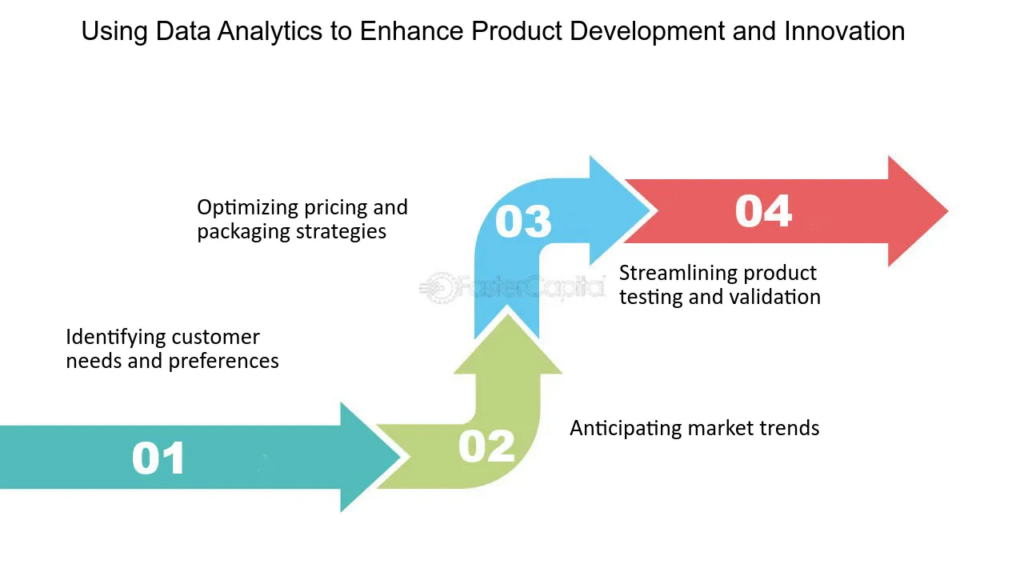Understanding Share of Search
Share of Search (SoS) is essentially the percentage of search queries related to your brand out of the total search queries for relevant keywords within your industry. It reflects consumer interest and awareness, offering a proxy for market share and predicting future growth trends. Let’s understand how to calculate share of search now.
How to Calculate Share of Search
Step 1: Identify Relevant Keywords

Image Source: DM Guru
The first step is to compile a comprehensive list of keywords relevant to your brand and products, including brand-specific terms, product categories, and broader industry-related keywords. This list should be informed by SEO best practices, google trends, competitor analysis, and keyword research tools.
Step 2: Calculate Your Share of Search
To calculate your share of search, you will need search engine data to measure the search volume for each keyword and the proportion of that volume that directly relates to your brand. You can use tools like Google’s Keyword Planner or SEMrush for this purpose. The formula is simple:
Share of Search= (Brand’s Search Volume/ Total Search Volume for Relevant Keywords)×100%
Step 3: Analyze the Data
Once you have your SoS, it’s time to dive deep into what these numbers mean. A higher SoS indicates stronger brand visibility and awareness. Compare your SoS with that of your competitors to understand your market position. Also, track your SoS over time to monitor trends, seasonal fluctuations, or the impact of marketing campaigns.
Step 4: Utilize Share of Search to Inform Strategy
Leverage your Share of Search data to make informed decisions about your marketing and SEO strategies. If your SoS is low for certain keywords, consider content optimization, SEO improvements, or targeted advertising. For keywords where your SoS is strong, explore opportunities to further capitalize on this advantage, such as expanding your product range or enhancing user experience on your website.
How to Utilize Share of Search for your Ecommerce Brand
Utilizing Share of Search (SoS) for your eCommerce brand involves a strategic approach that goes beyond merely understanding your brand’s visibility in search engine results. SoS, the proportion of search query volume for your brand compared to the total volume for relevant industry keywords, can provide valuable insights into brand awareness, competitive positioning, and market trends. Here’s how you can effectively utilize SoS for your eCommerce brand:

Source: Metrics Cart
Benchmark Against Competitors
- Assess Your Position: Begin by comparing your SoS with that of your main competitors. This comparison will help you understand your brand’s relative visibility and prominence in the market.
- Identify Gaps and Opportunities: Look for areas where your competitors have a higher SoS and analyze what they are doing differently or better. This could relate to product offerings, marketing strategies, or SEO tactics.
Inform SEO and Content Strategies

Image Source: Web Design Lincolnshire
- Keyword Optimization: Use your SoS insights to refine your website’s SEO strategy. With search engine data from google trends, focus on keywords where you have lower visibility to improve your rankings.
- Content Creation: Tailor your content marketing efforts to address topics, questions, and keywords where your SoS indicates potential for growth. This could include blog posts, buying guides, and product videos that cater to the interests of your target audience.
Optimize Your Digital Marketing Mix
- Targeted Advertising: Allocate more of your advertising budget to search terms where your SoS is low but which are crucial for your business. This can help increase your brand’s visibility and capture more market share.
- Social Media Synergy: Use social media platforms to boost your SoS by creating content that encourages searches for your brand. Hashtags, influencer partnerships, and engaging content can drive brand-related searches.
Enhance Product Development and Innovation

Image Source: Faster Capital
- Consumer Insights: A change in SoS can indicate shifting consumer interests or emerging trends. Use these insights to guide new product development or improve existing offerings.
- Market Entry Strategies: When entering new markets or launching new products, use SoS to assess consumer interest and tailor your launch strategy accordingly.
Monitor Performance Over Time
- Track Trends: Regularly monitor your SoS to identify trends, seasonal fluctuations, and the impact of marketing campaigns. This will help you adapt your strategies in real-time.
- Performance Dashboard: Consider integrating SoS metrics into your marketing performance dashboards for a holistic view of your brand’s online health.
Leverage Digital Shelf Analytics
- Integration with Digital Shelf Analytics: Enhance your SoS strategy by integrating it with digital shelf analytics solutions. These platforms can provide deeper insights into how your SoS translates into actual online performance, including product availability, pricing, and customer reviews.
- Actionable Insights: Use these insights to optimize your listings, adjust pricing strategies, and improve customer experience, further increasing your brand’s search, market share and conversion rates.
Conclusion
Monitoring Share of Search allows businesses to assess their performance over time and track changes in their market positioning. By identifying fluctuations and trends in their Share of Search, companies can gain valuable insights into the effectiveness of their marketing efforts, the impact of competitors, and shifts in consumer behavior.
That’s where 42Signals provides a comprehensive solution that addresses these gaps and delivers measures to continually optimize strategies. With a range of features including the Keyword Ranking Dashboard, Competitor Analysis Dashboard and Product Performance Dashboard, the digital shelf analytics’ feature from 42Signals equips businesses with the tools they need to gain a better understanding of their performance and take corrective measures. Get in touch with us at sales@42signals.com





